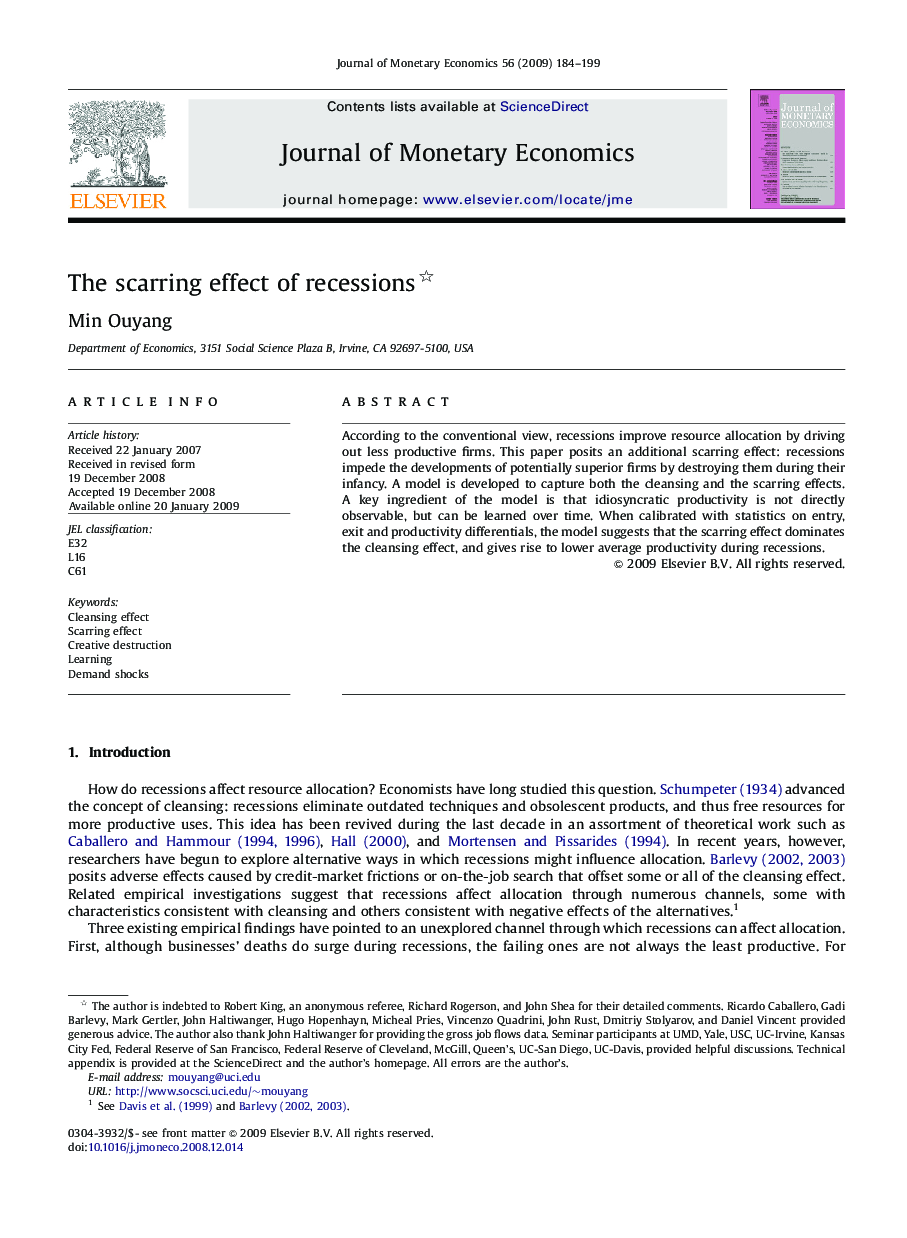| Article ID | Journal | Published Year | Pages | File Type |
|---|---|---|---|---|
| 967142 | Journal of Monetary Economics | 2009 | 16 Pages |
Abstract
According to the conventional view, recessions improve resource allocation by driving out less productive firms. This paper posits an additional scarring effect: recessions impede the developments of potentially superior firms by destroying them during their infancy. A model is developed to capture both the cleansing and the scarring effects. A key ingredient of the model is that idiosyncratic productivity is not directly observable, but can be learned over time. When calibrated with statistics on entry, exit and productivity differentials, the model suggests that the scarring effect dominates the cleansing effect, and gives rise to lower average productivity during recessions.
Related Topics
Social Sciences and Humanities
Economics, Econometrics and Finance
Economics and Econometrics
Authors
Min Ouyang,
